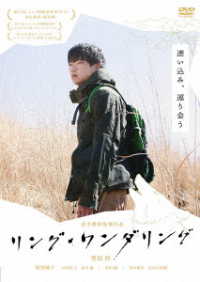- ホーム
- > 洋書
- > 英文書
- > Science / Mathematics
Full Description
The beautiful tropical dry forest of northwest Costa Rica, with its highly seasonal rainfall and diversely vegetated landscape, is disappearing even more rapidly than Costa Rica's better-known rain forest, primarily because it has been easier to convert to agriculture. This book, based on more than thirty years of study, offers the first comprehensive look at the ecology, biodiversity, and conservation status of this endangered and fragile region. The contributors, from Costa Rica, Britain, Mexico, and the United States, and representing the fields of ecology, environmental education, policy, and the law, examine the major plant and animal groups living in the dry forest and present the first technical evaluation of Costa Rica's conservation efforts.
As they assess the status of their area of specialty in the dry forest, the contributors also look beyond this particular region to show how its plants and animals are ecologically and evolutionarily connected to other geographic areas in Costa Rica and Central America. Their chapters cover topics such as watershed and coastal management, plant phenology, pollination, insects, birds, mammals, amphibians, and reptiles. They also consider the socioeconomic, policy, legal, and political aspects of biodiversity conservation, giving the volume a wide-ranging perspective and making a unique contribution to our knowledge of the tropical dry forest. The book concludes with an important synthesis of the contributors' recommendations on future directions, policies, and actions that will better conserve biodiversity in Costa Rica and other neotropical forests as well.
This title is part of UC Press's Voices Revived program, which commemorates University of California Press's mission to seek out and cultivate the brightest minds and give them voice, reach, and impact. Drawing on a backlist dating to 1893, Voices Revived makes high-quality, peer-reviewed scholarship accessible once again using print-on-demand technology. This title was originally published in 2005.
Contents
Preface
1. Introduction—Alfonso Mata and Jaime Echeverría
PART I. BIODIVERSITY AND ECOLOGICAL STUDIES
A. COSTA RICAN DRY FOREST
2. Flowering Phenology and Pollination Systems Diversity in the Seasonal Dry Forest—Gordon W. Frankie, William A. Haber, S. Bradleigh Vinson, Kamal S. Bawa, Peter S. Ronchi, and Nelson Zamora
3. Breeding Structure of Neotropical Dry-Forest Tree Species in Fragmented Landscapes—James L. Hamrick and Victoria J. Apsit
4. Impact of Global Changes on the Reproductive Biology of Trees in Tropical Dry Forests—Kamal S. Bawa
5. Tropical Dry-Forest Mammals of Palo Verde: Ecology and Conservation in a Changing Landscape—Kathryn E. Stoner and Robert M. Timm
6. The Conservation Values of Bees and Ants in the Costa Rican Dry Forest—S. Bradleigh Vinson, Sean T. O'Keefe, and Gordon W. Frankie
7. Ecology of Dry-Forest Wildland Insects in the Area de Conservación Guanacaste—Daniel H. Janzen
B. BIOTIC RELATIONSHIPS WITH OTHER COSTA RICAN FORESTS
8. Diversity, Migration, and Conservation of Butterflies in Northern Costa Rica—William A. Haber and Robert D. Stevenson
9. Watershed Ecology and Conservation: Hydrological Resources in the Northwest of Costa Rica—Alfonso Mata
10. Where the Dry Forest Feeds the Sea: The Gulf of Nicoya Estuary—José A. Vargas and Alfonso Mata
11. Mangrove Forests under Dry Seasonal Climates in Costa Rica—Jorge A. Jiménez
C. BIOTIC RELATIONSHIPS WITH OTHER GEOGRAPHICAL AREAS
12. Geographical Distribution, Ecology, and Conservation Status of Costa Rican Dry-Forest Avifauna—Gilbert Barrantes and Julio E. Sánchez
13. An Ultrasonically Silent Night: The Tropical Dry Forest without Bats—Richard K. LaVal
14. Biodiversity and Conservation of Middle American Dry-Forest Herpetofauna—Mahmood Sasa and Federico Bolaños
15. Parque Marino Las Baulas: Conservation Lessons from a New National Park and From 45 Years of Conservation of Sea Turtles in Costa Rica—James R. Spotila and Frank V. Paladino
16. Prospects for Circa Situm Tree Conservation in Mesoamerican Dry-Forest Agro-ecosystems—David H. Boshier, James E. Gordon, and Adrian J. Barrance
PART II. TRANSFERRING BIODIVERSITY KNOWLEDGE INTO ACTION: THE RECORD
17. Biodiversity Inventories in Costa Rica and Their Application to conservation—Paul Hanson
18. Conflict Resolution: Recognizing and Managing Discord in Resource Protection—Gregory A. Giusti
19. Conservation and Environmental Education in Rural Northwestern Costa Rica: Learning the Lessons of a Nongovernmental Organization—Gordon W. Frankie and S. Bradleigh Vinson
20. The Media and Biodiversity Conservation—Gilda Aburto
21. Threats to the Conservation of Tropical Dry Forest in Costa Rica—Mauricio Quesada and Kathryn E. Stoner
22. Environmental Law of Costa Rica: Development and Enforcement—Roxana Salazar
23. Dispute over the Protection of the Environment in Costa Rica—Julio A. Bustos
24. The Policy Context for Conservation in Costa Rica: Model or Muddle?—Katrina Brandon
25. Conclusion and Recommendations—Gordon W. Frankie, Alfonso Mata, and Katrina Brandon
List of Contributors
Index
-

- DVD
- リング・ワンダリング
-

- 電子書籍
- ゴーマニズム宣言6 幻冬舎文庫






